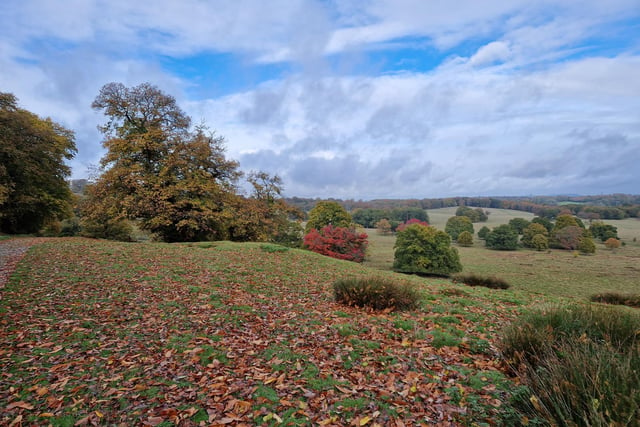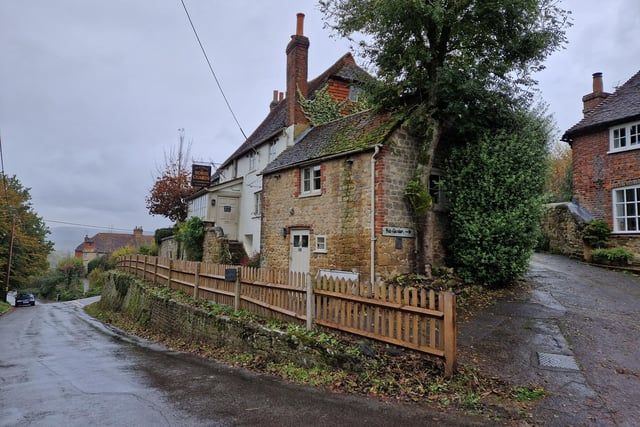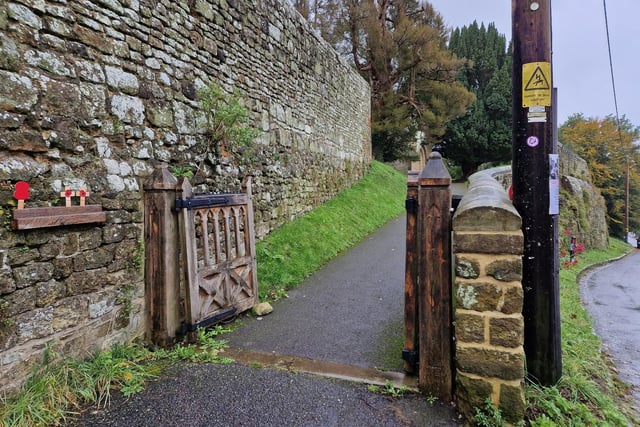National Trust walk leader Gerald Gresham Cooke kindly offered to take me on a personal tour after reading my recent recent Petworth Park walk.
This one is shorter, less than two miles in fact, and with the benefit of that refreshments stop! It is also easy to reach by bus, using the Stagecoach no.1 from Worthing or Midhurst.
Start at The Horse Guards Inn at Tillington. Take the path opposite and walk around the south side of All Hallows Church, past the war memorial, to the end, where you turn right down some steps.
Continue to follow the path round to the main road. Walk on the pavement alongside the A272 for around 300 yards and enter Petworth Park via the New Lodges gate. Just inside there is a large map of the park, so you can place Petworth House.
Gerald explained to me that an ancient tree is a one which has reached the last third of its overall lifespan. An ancient yew might be 800, an oak anything over 600 and a birch anything over 80 years old.
Many of the trees on this route are oak and sweet chestnut, which help feed the deer, plus beech, lime, birch and maple.
Ignore the concrete path directly ahead and take the wide grass path on your left, following the right fork, taking you up into the park. Walk towards the tallest tree ahead of you and just before you reach it, look to your left. Here, off the main track, are two fascinating ancient trees.
The very old, hollow lime tree is difficult to age as the trunk has fragmented. Gerald said: "It is perhaps 500 to 600 years old with a girth of 7.46m. It could continue as a hollow shell for several hundred years. It was thought that Grinling Gibbons used this lime wood for his carvings in the house."
Alongside is a large fallen lime tree which must have seemed dead but has since sprouted lots of new branches shooting up towards the sky. Quite a sight! Alongside is part of the historic Tillington tunnel, created by Capability Brown to feed water into the pond.
Back on the main path, continue past another fallen tree. To the left, along the fence line of the paddocks, is an ancient oak tree and then an ancient London Plane tree with a girth of 5.7m, approximately 270 year old.
You will pass through a section of lime trees which have been planted to provide an important source of nectar for bees and other insects in early summer, as the deer strip so much of some of the other varieties.
Just the other side of these, if you look to the right you will see another ancient lime with a hollow trunk. This tree is 500 to 600 years old and it is kept trimmed low to protect it from the wind and hopefully prevent it being blown over. If you do walk down to it, you will get a nice view of Petworth House.
Continuing on the main track, you will pass some ancient sweet chestnuts on the top of the hill. Autumn provides the perfect time to see the American oaks at their best and the first is a scarlet oak just down on the right. This tree lost a major limb in 2015 during high winds.
A little further along, a red oak comes in to view on the right, with Arbour Hill in the distance. There will be an opportunity to walk down to this for a closer look before you finish, if you wish to.
Gerald showed me a hornet tree trunk, which he first saw about 20 years ago when he moved to the area. It was about twice the size but has since shrunk due to the insects and fungus feeding on it. "Nature is amazing," he said.
Near here, in the distance to the right, is Gerald's favourite oak tree. He says he loves it because it is exactly as a child would draw a tree, a short trunk and a perfect dome of green.
As you start to head downhill, you will see two huge sweet chestnuts that are 500 to 600 years old and have fantastic trunks. The one on the right is particularly interesting because of the spiraling. You can see the way the bark twists and weaves all the way up, like a helter skelter.
If you look down towards Lower Pond, you will see another interesting trunk. Here is one of the oldest oak trees in the park at around 850 years old and it has distinctive epicormic growths.
If you now double back up the main path, you will see a path to your right, which takes you to Upperton Gate. Opposite, is a path down to the red oak, if you wish to go to see that first. Follow the path uphill to a gate beside Upperton Spring and then on up to a second gate out of the park.
Go up the steps to Upperton Road. If you cross over to the old cricket ground, you can see a lovely view over to Duncton and Graffham. Follow the road downhill and enjoy the sight of the Scots Crown spire on the church before you reach the pub and a well-earned pint.

1. Ancient trees walk
Ancient trees at Petworth Park in the autumn Photo: Elaine Hammond

2. Ancient trees walk
National Trust walk leader Gerald Gresham Cooke with Elaine Hammond at Petworth Park Photo: Elaine Hammond

3. Ancient trees walk
Start at The Horse Guards Inn at Tillington Photo: Elaine Hammond

4. Ancient trees walk
Take the path opposite the pub Photo: Elaine Hammond